Another round of projects.
|
I did work quite a bit on the log splitter today. I first set about to fix the compressor broken line. I went to the shop and started digging through my pieces of drops for something suitable to make a "flaring tool". I found what I thought was a piece that would work and headed over to the toolbox to get a caliper and start figuring out how I wanted to lay out what I needed to do. While going to find the calipers I saw a 3/8 inch socket in half inch drive. I thought that it sure looked like it might just fit in the copper tube on the necked down portion. I took it out to the copper tube and sure enough it fit right in. I quickly trimmed the copper tube shorter, filed the edges to prep for the flare and slid the flare nut on. Took the trusty socket and a hammer and tapped the socket in until the area that was larger started to flare the copper out. It only took a few dozen light taps to make a good flare start. I slid the flare nut up to the end a few times to ensure I didn't get the shoulder of the tube too large. Once I was satisfied with the diameter I went ahead and screwed the flare nut down tight on the flare fitting to set the angle properly on the flare I just made. I took it all apart and compared it to the original flare and was pretty happy with the results.
I went ahead and reassembled the compressor (belts and interstage tube) and fired up the compressor and welder and tested the fix out. Didn't have any noticable issues with the repair. I wish I had dug through the toolbox yesterday, but I am sure I wouldn't have thought to try this then. I got the top plate completely removed. Gouged bevels into the 2 ends and then dressed all the cuts with the grinder. By the end of the day I had everything about ready to start reassembling and rewelding. I decided I had done enough hunched over work today that I thought I had better wait until tomorrow to start welding the top plate back in. A few pictures from today. 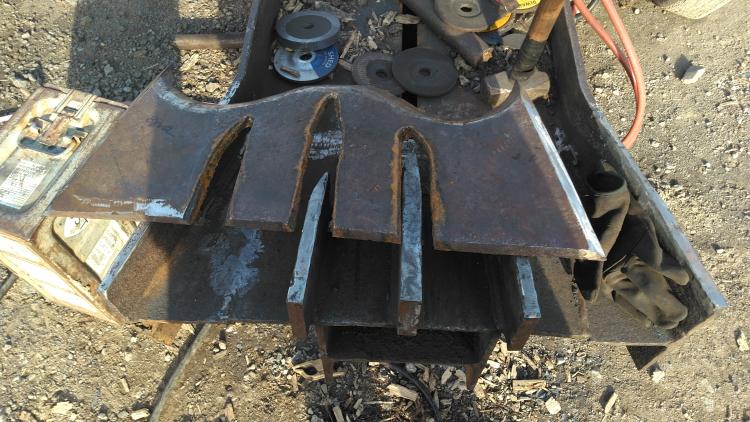 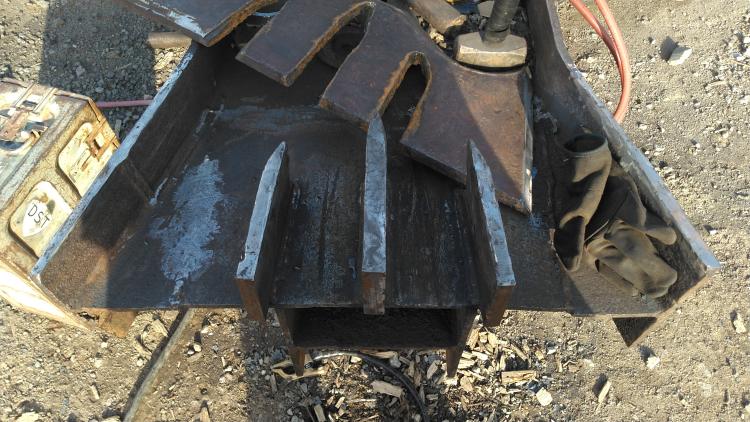 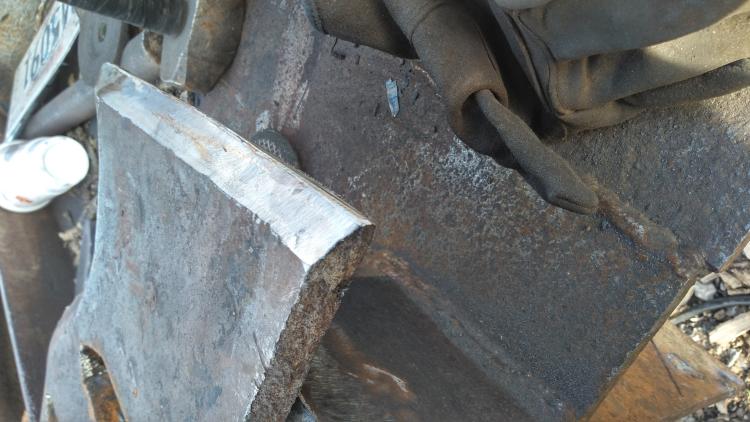 I figured out pretty quickly the arc gouging if you take your time and use smooth movement you need very little grinding to get it ready to weld. The bevels only needed about 5 minutes of cleaning up.
1985 Bronco
6.9 IDI hydroboost brakes 8 Lug coil sprung D44ttb 10.25 3:55 warn classic bumper 8274 warn winch Saginaw Conversion 1986 Ford F350 "Dump Truck" 6.9 IDI T19 8'x12'x4' hydraulic dump bed front mounted tow bar 1981 Ford F350 "Welding Truck" 300 I6 T18 Welders bed with hoist onboard air |
|
In reply to this post by FuzzFace2
I really appreciate this post. I will have to try and find some to try and make a new cooler.
1985 Bronco
6.9 IDI hydroboost brakes 8 Lug coil sprung D44ttb 10.25 3:55 warn classic bumper 8274 warn winch Saginaw Conversion 1986 Ford F350 "Dump Truck" 6.9 IDI T19 8'x12'x4' hydraulic dump bed front mounted tow bar 1981 Ford F350 "Welding Truck" 300 I6 T18 Welders bed with hoist onboard air |
|
Administrator
|
In reply to this post by IDIBronco
Well done! You sure are getting quite a bit accomplished. And I don't think I'd have thought of using a socket to flare the tube. Ingenious!

Gary, AKA "Gary fellow": Profile
Dad's: '81 F150 Ranger XLT 4x4: Down for restomod: Full-roller "stroked 351M" w/Trick Flow heads & intake, EEC-V SEFI/E4OD/3.50 gears w/Kevlar clutches
|
To be completely honest I didn't think it would work. I already had decided I would have to substantially shorten the cooling loop to remove 1 loop around the flywheel to be able to reach the fitting again. So I just left the tube extra long so I could cut it off again when the socket damaged the end. Surprisingly it worked really well. Another "outside the box" thing to try to remember to make due with on hand tools. I like solutions like this.
1985 Bronco
6.9 IDI hydroboost brakes 8 Lug coil sprung D44ttb 10.25 3:55 warn classic bumper 8274 warn winch Saginaw Conversion 1986 Ford F350 "Dump Truck" 6.9 IDI T19 8'x12'x4' hydraulic dump bed front mounted tow bar 1981 Ford F350 "Welding Truck" 300 I6 T18 Welders bed with hoist onboard air |
|
Administrator
|
In reply to this post by IDIBronco
Be mindful that Slant fin is very thin tubing.
It is never run at the sort of pressures (200) your compressor develops.
Jim,
Lil'Red is a '87 F250 HD, 4.10's, 1356 4x4, Zf-5, 3G, PMGR, Saginaw PS, desmogged with a Holley 80508 and Performer intake. Too much other stuff to mention. |
Mine has been ok at 175+ psi It is at the other end of the shop so if it splits its only air. I had 1 of my loop line fittings , compression type, come apart just made a he'll of a noise from the air rushing out. Dave. ----
Dave G.
81 F100 flare side 300 six / AA OD / NP435 / 2.75 gear http://cars.grantskingdom1.com/index.php/1980-Ford-F100?page=1 81 F100 style side 300 six/SROD parts truck -RIP http://cars.grantskingdom1.com/index.php/1981-Ford-F100 |
|
Administrator
|
I'm not saying that the element is going to be dangerous, just that it isn't rated for anything close to that kind of pressure.
Typical hot water boilers aren't going to have more than 30psi even in a five storey building. (This will change somewhat depending on water temperature and fill pressure of the expansion tank) Also the thin tubing is not subject to the vibration seen by an engine driven, trailer mounted, compressor head. E75 hydronic elements have 55 aluminum fins per foot, a bit over 2" square.
Jim,
Lil'Red is a '87 F250 HD, 4.10's, 1356 4x4, Zf-5, 3G, PMGR, Saginaw PS, desmogged with a Holley 80508 and Performer intake. Too much other stuff to mention. |
|
I suspect the interstage pressure wouldn't be all that high. Well within the spec range of the factor of safety designed into the copper tube, but I will do more research. I may make my own cooler. I have a few ideas floating around. Hopefully today will get the top plate welded back on. I took a few minutes this morning before getting on to normal jobs to work on the bend in the top plate with the hydraulic press. I was able to take enough bend out to feel comfortable using the plate again. I hopefully will have some pictures again late this afternoon.
1985 Bronco
6.9 IDI hydroboost brakes 8 Lug coil sprung D44ttb 10.25 3:55 warn classic bumper 8274 warn winch Saginaw Conversion 1986 Ford F350 "Dump Truck" 6.9 IDI T19 8'x12'x4' hydraulic dump bed front mounted tow bar 1981 Ford F350 "Welding Truck" 300 I6 T18 Welders bed with hoist onboard air |
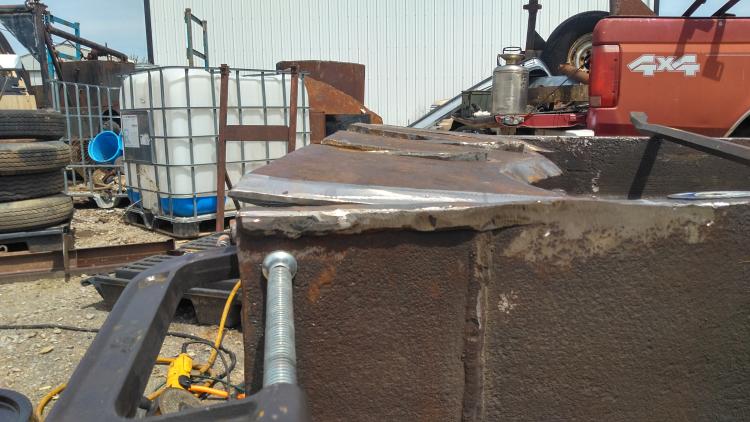 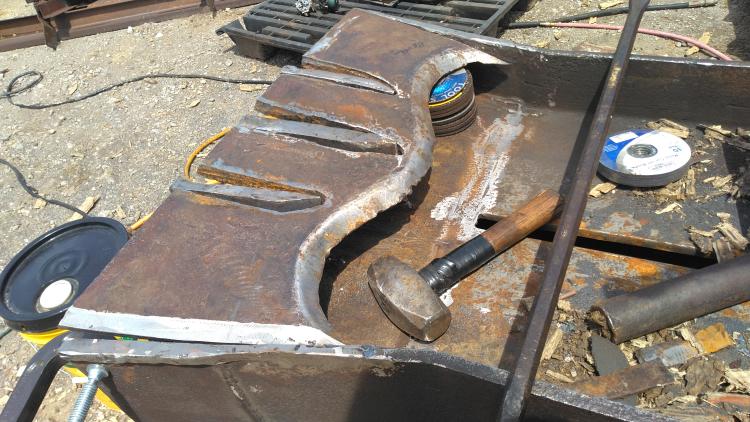   It took a substantial amount of welding to fill and have structurally sound welds around the uprights, but I have it mostly back together. I have a little more to do maybe tomorrow afternoon but it will be moved off the to do list shortly. Been waiting to do this fix for a few months already.
1985 Bronco
6.9 IDI hydroboost brakes 8 Lug coil sprung D44ttb 10.25 3:55 warn classic bumper 8274 warn winch Saginaw Conversion 1986 Ford F350 "Dump Truck" 6.9 IDI T19 8'x12'x4' hydraulic dump bed front mounted tow bar 1981 Ford F350 "Welding Truck" 300 I6 T18 Welders bed with hoist onboard air |
|
Administrator
|
That looks ..... scary! Like it would cut through anything. Wow!
Gary, AKA "Gary fellow": Profile
Dad's: '81 F150 Ranger XLT 4x4: Down for restomod: Full-roller "stroked 351M" w/Trick Flow heads & intake, EEC-V SEFI/E4OD/3.50 gears w/Kevlar clutches
|
|
Took a few years to accumulate enough pieces to build the machine, but it is close to what I had envisioned. Every time the splitter ram comes forward up to 4 finished pieces of firewood go through and end up on the conveyor. The unsplit wood piece remains on the top of the top plate and you just slide it back or flip it over into the area again to be split. You almost never pick anything up again to be resplit. This is the 3rd design change of the wedge now. Hopefully it holds up. If it doesn't I am starting over and removing everything down to the main beam to change angles on the uprights.
A few tweaks to make yet. I still need to properly mount the battery and fuel tank. I need to fabricate a "funnel" to catch all the little pieces and direct everything on to the out feed belt. I don't want all the little splintered pieces of wood around my feet anymore. I built a screen at the top of the conveyor already to direct the small stuff into a plastic bin. 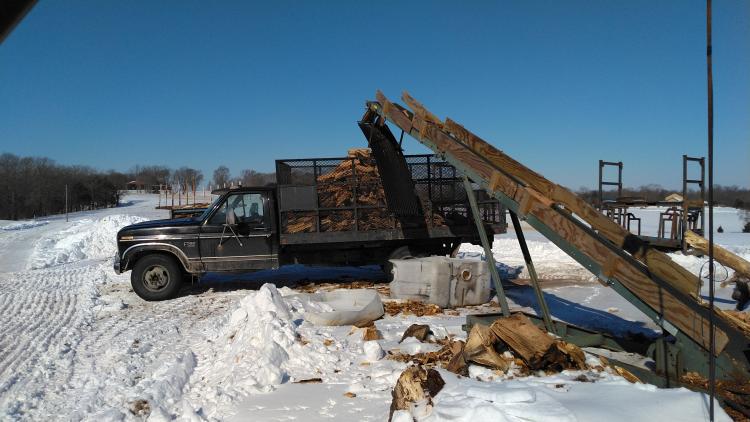 It doesn't get all the little stuff out, but reduces what makes it onto the truck. 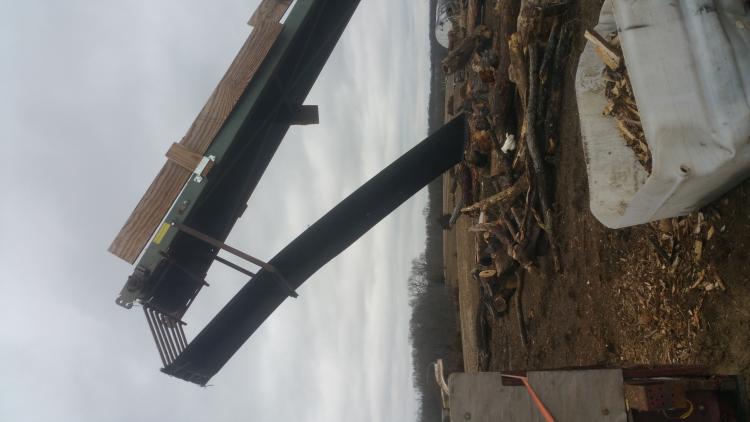 The wedge doesn't like some of the more difficult to split pieces so I work around the edges of a big piece to whittle it down small enough to handle and toss it off the other side of the splitter into a specific ibc tote cage. I have been trying to market the stuff to difficult to split as either stove wood or big campfire chunks. So far people have liked them. The out feed conveyor I picked up reasonably priced used. I had to make a 2 hour trip with a buddy to go get it, but it is the single biggest time saver of the entire operation. It was an electric drive setup, but I fabricated a mount and put a hydraulic motor to run from the splitter. It has a forward and reverse detent so you can reverse to clean up any log jams. I cannot hardly operate if I have an issue with it. I waste so much time trying to handle the wood otherwise. Really it has been a good investment. I have only had to repair the splice in the belt, but I suspect the repair will last a long time. 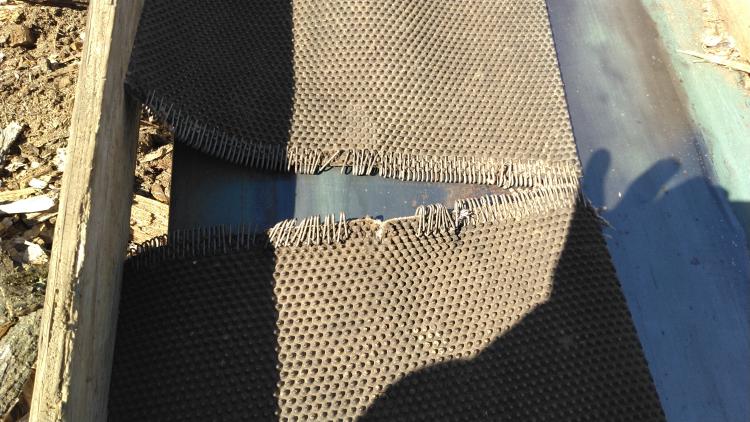 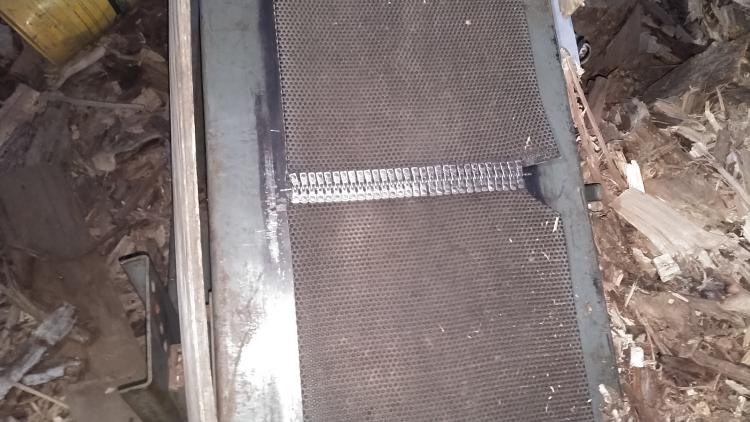 I basically just ran through some of my photos and tried to show some of the more recent highlights... And a few random shots.  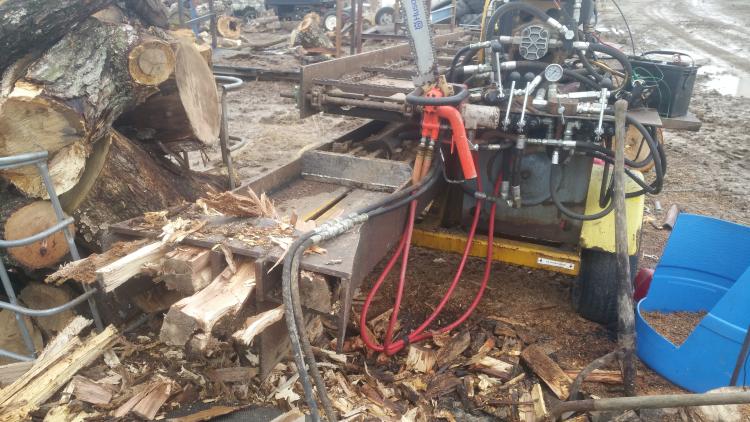 I believe the splitter has a 30 gallon hydraulic tank, 25 hp Kohler, 18gpm pump (flywheel end), 8gpm and 1.2gpm tandem pumps on the output shaft end. Auto cycle cylinder valve (pull 2 levers it goes all the way out and back then kicks in neutral) 2 detent out feed conveyor valve, and a forward/neutral/reverse motor spool for the in feed chains. The way I plumbed the hydraulics... 18gpm goes to the autocycle valve set at 500 psi. The 8gpm pump is routed to a selector valve then to the in feed chains valve and on power beyond port it goes to the autocycle valve for splitting. It makes the system act like a 2 stage pump for splitting. It took an extra pressure relief, a check valve, and a tee to accomplish this. The selector valve in the other position puts the 8gpm to the hydraulic saw. It has a bypass valve set at 1200 psi (if memory serves). And the 1.2 pump is dedicated to out feed conveyor. I have a flow control needle valve to adjust belt speed. That is enough information for one update I guess ...
1985 Bronco
6.9 IDI hydroboost brakes 8 Lug coil sprung D44ttb 10.25 3:55 warn classic bumper 8274 warn winch Saginaw Conversion 1986 Ford F350 "Dump Truck" 6.9 IDI T19 8'x12'x4' hydraulic dump bed front mounted tow bar 1981 Ford F350 "Welding Truck" 300 I6 T18 Welders bed with hoist onboard air |
|
Administrator
|
In reply to this post by IDIBronco
Man! That's a lot to fill
I'm not familiar with 6027, but that looks like a good application. Maybe you'd need 6014 for where the side plates meet the top? Have you (or have you considered) hard facing the cutting edges? I've split a good amount of firewood over the years but making a living at it seems like plowing (blood money) You've obviously put a lot of thought and time into the setup. I hope the extra clearance angles work out for you!
Jim,
Lil'Red is a '87 F250 HD, 4.10's, 1356 4x4, Zf-5, 3G, PMGR, Saginaw PS, desmogged with a Holley 80508 and Performer intake. Too much other stuff to mention. |
|
Administrator
|
Wow! That's a MACHINE!
 You've really put a lot of work into that. I'm impressed. How many years has it taken to get it where it is? And how much wood do you typically sell in a year? It must be a whole lot. Good luck on the splitter. Hope it works our extremely well.
Gary, AKA "Gary fellow": Profile
Dad's: '81 F150 Ranger XLT 4x4: Down for restomod: Full-roller "stroked 351M" w/Trick Flow heads & intake, EEC-V SEFI/E4OD/3.50 gears w/Kevlar clutches
|
|
This post was updated on .
The firewood hobby has been a long term project for me.
I started around age 13 or 14 with the help of my dad when a piece of property my grandma had was timbered. We started using a f250 with a winch bumper to drag pieces to the edge of the woods and all the splitting was done by hand at the start. Truth be told I paid most of my college expense with firewood and grass mowing money. I think back then around my freshman year of college (I commuted to school) I sold 60 pickup loads of wood. After I graduated from college and got a "real" job I gave up firewood. When I moved back close to home and went to work with the family business I started cutting a little firewood mainly to clean field edges and dead standing trees. I got hurt and required shoulder surgery and everything about how I did things changed. I decided the smart thing to do was to work smarter and not harder. This was the start of making better firewood equipment. I had already picked up a small log splitter and split maybe 50 loads (25-30 cords) a year at this point. I had figured out setting the splitter up on a stack of pallets so the splits where always at standing height. I took rounds off an ATV trailer, split them and tossed them onto a truck bed trailer (I have a few). And they stayed there as they where sold I split more. I spent a LOT of hours of free time doing this work. I was single and didn't care much for going out all that much. I actually traded that first splitter and a chainsaw with an ATV I had repaired for the bronco with the 6.9 diesel in it. I had got a bigger homemade splitter off Craigslist and decided it was a better canididate to upgrade. It was at this point things became a little more out of hand...  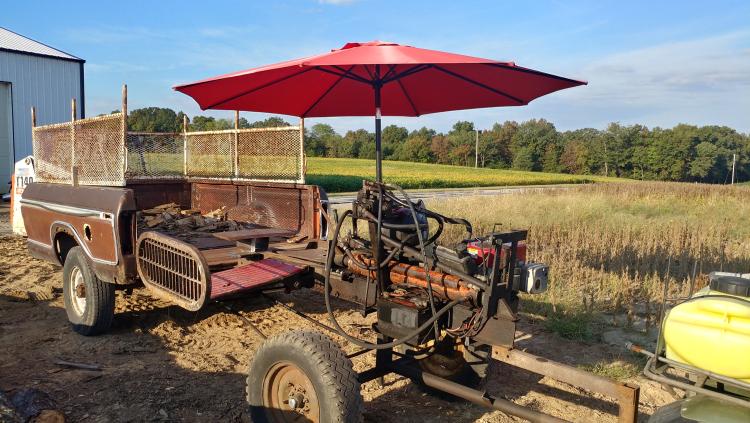 This is where that splitter ended up at its best production level. I had lifted it up to work standing up. I added a hydraulic lift to raise the rounds to beam height from the ground. I had mounted a box wedge design to the splitter, an unbrella holder, and table on the non work side. I broke the wedge off several times as I figured out welding better and better. I also upgraded welding equipment a few times through the process. Eventually I broke the entire I beam on that splitter at the start of the wedge and end of the hydraulic cylinder stroke. I changed it back to just a plain vertical wedge and decided to start building this new machine for better production. I have used these projects to learn to weld and practice. I don't do firewood as a job at all currently. It is still a hobby, but I could probably switch to firewood full time if I wanted with the equipment now. Probably just need a bit newer and more trustworthy truck. I have not sold any big volume of wood really. I have a simple roadside honor system sign with my phone number and occasionally get asked to deliver to local people. I think I did just over 50 cords that I cut and split and I had another 15 or 20 cords I bought and resold from a widow at church. I was assembling the new machine for a good part of the last season and didn't use it for too much of the time. I think I want to set a goal of 100 cords this next winter, but I suspect I will do more unless I have big equipment issues. I work alone and probably need to figure out hiring a local kid if I want to do too much more than that. My typical business model is I get home from work, cut and split wood for the next 2 hours or so and when my wife gets home I go in for the night. It used to take me 3 days to fill a load like this on this plan. 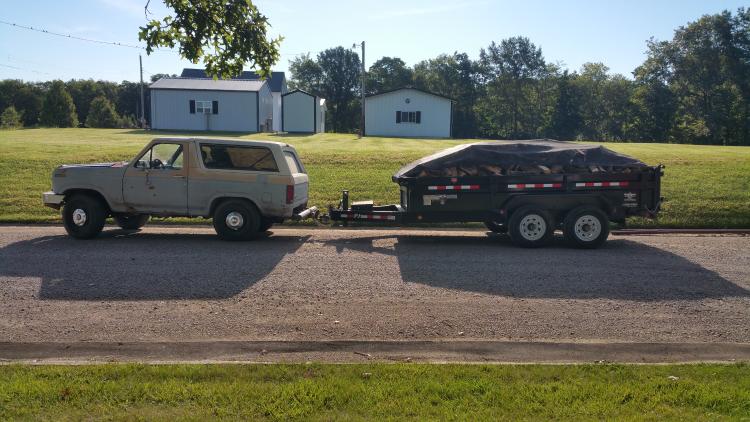 Now with the new equipment it takes about two days and I start from logs instead of starting from already cut rounds of wood like I used to so there is probably another evening worth of time saved. I cut logs to dump trailer length and load them with the grapple on the skid steer and haul them into the staging area I work in. Dump them off and once the area gets too cluttered I use the skid steer to stack them. I may build some proper log racks and an loading system. Right now I use a palletized metal rack to hold 3 or 4 logs and hand roll them onto the splitter deck from the stand. Or just use the skid steer to load a log and split it up then run grab another from the pile. If I become too bored and find some more time I will probably make a hydraulic live deck to sit the logs on and will be able to hydraulically bring the next log onto the infeed chains. I typically never run out of projects, ever. I think I drug the main split beam parts over to my buddy who is a retired welder maybe February 2020. I wanted the critical things welded by someone who knew what they are doing... I did however spend the entire time under a welding hood absorbing as much welding knowledge as I could. Those few days I learned more about puddle control and machine settings then I had in all the years before. I feel comfortable making structural welds for projects now and I am starting to have some vertical and overhead welds that look like someone knew what they where doing. I still do not feel 100 percent competent, but I am no longer scared I will mess something up. I can just cut it apart and try again. No life critical repairs....
1985 Bronco
6.9 IDI hydroboost brakes 8 Lug coil sprung D44ttb 10.25 3:55 warn classic bumper 8274 warn winch Saginaw Conversion 1986 Ford F350 "Dump Truck" 6.9 IDI T19 8'x12'x4' hydraulic dump bed front mounted tow bar 1981 Ford F350 "Welding Truck" 300 I6 T18 Welders bed with hoist onboard air |
|
In reply to this post by IDIBronco
That is the neatest log splitting set up that I have ever seen.
I respect your ingenuity and know how. When I lived in the north and used to burn wood I would split with a maul. I would wait until it was about -40 and the wood would split really easily. I really like your build. Bob
Bob near Winnipeg
1986 F250 Lariat extended cab 300 T18 2WD 1979 Honda CX500 1992 Oldsmobile 98 touring sedan 2007 F250 6.0 4wd |
I appreciate the kind words. Splitting with a maul is a learned skill. Usually it is more important to know where to hit then how hard you hit. (Gotta love ash and walnut if splitting by hand) I have split more wood with a 12 lb splitting maul then I care to think about, but it does give you some insight on how to position the rounds with a log splitter. It isn't always just throwing a block on and go to splitting. You can (and I have) get a block thoroughly stuck on this style wedge and have to spend a big amount of time removing the issue. I have plans to add a chain and some hooks on the push plate to help pull a stuck piece of wood off the wedge, but it is much smarter to toss the ones that just look bad into the cull cage and sell as a big chunk. I cannot take credit for being original. A lot of the ideas incorporated into this machine are found on others. I just picked the features I liked and used what I had to make it. I picked up some old bridge beam pieces cheap for the main split beam and infeed trough. There is an h pile welded to the bottom of the main split beam to give it enough strength since the bridge beam is laying on it's side. The infeed chains are all junk combine parts I traded to get out of the neighbors junk pile. Hydraulic motors came from used sources. The trailer itself is an old pull behind powered pavement broom trailer. It actually would look more thought out and planned than it actually was if I ever get it sand blasted and painted. The pieces all came together in a pretty compact package. The motor and a couple hydraulic pumps came from a piece of yard equipment. The big purchases where hydraulic controls, hoses, and fittings. I bought the right parts and splurged on the valves I wanted the machine to have. It wasn't cheap, but I think it will earn it's keep. There are a lot of hours involved in making the thing...
1985 Bronco
6.9 IDI hydroboost brakes 8 Lug coil sprung D44ttb 10.25 3:55 warn classic bumper 8274 warn winch Saginaw Conversion 1986 Ford F350 "Dump Truck" 6.9 IDI T19 8'x12'x4' hydraulic dump bed front mounted tow bar 1981 Ford F350 "Welding Truck" 300 I6 T18 Welders bed with hoist onboard air |
|
That is a machine, indeed! I agree, impressive and ingenious. Neat to see.
I agree on working smarter not harder, previous injuries hamper me and you have to figure out ways to do things. One of my ways, my 25 year old son, will be going to PA school as soon as he can. I’m looking at small cranes that mount in the receiver hitch. But, nothing like you’re doing. Keep at it.
Dane
1986 F250HD SC XLT Lariat 4x4 460 C6-Sold 1992 Bronco XLT 4x4 351W E4OD 1998 GMC Sierra SLE K1500 350 4L60E Arizona |
|
Administrator
|
That's an amazing story! I'm in awe of your ability to make things.

Gary, AKA "Gary fellow": Profile
Dad's: '81 F150 Ranger XLT 4x4: Down for restomod: Full-roller "stroked 351M" w/Trick Flow heads & intake, EEC-V SEFI/E4OD/3.50 gears w/Kevlar clutches
|
|
Late this afternoon I fired the splitter up and split some very hard dry hickory rounds I had sitting on the in feed chains. No issues and the angle change seems to relieved the issue of compressing the wood. The split is taking less pressure to go through the end of the splits according to the pressure gauge. It looks like they are going into the 18gpm stage to finish the split.
I was happy enough I coated the fresh steel with some black paint. I need to dig around my supply of old tires and wheels and pick out a different pair for the splitter and call it done for now. It looks like we are supposed to get 1-3 inches of rain over the next 24 hours so I packed all my stray tools up, cleaned most of my messed up, and made a quick compressor cover. 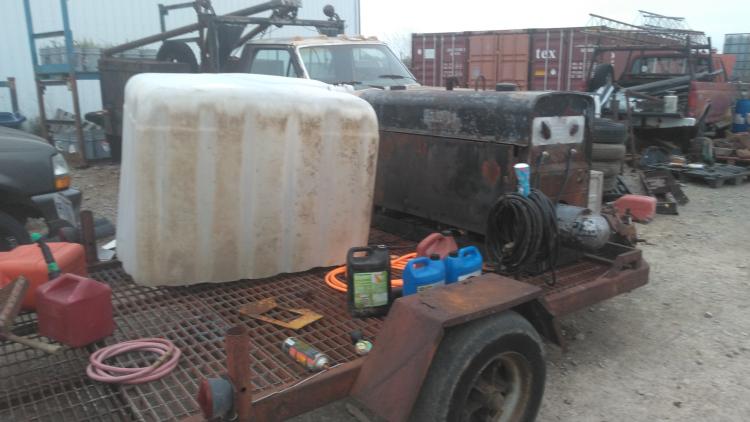 Just an ibc tote tank with the top cut out. Fits pretty well I think. Probably the end of the updates until later this week.
1985 Bronco
6.9 IDI hydroboost brakes 8 Lug coil sprung D44ttb 10.25 3:55 warn classic bumper 8274 warn winch Saginaw Conversion 1986 Ford F350 "Dump Truck" 6.9 IDI T19 8'x12'x4' hydraulic dump bed front mounted tow bar 1981 Ford F350 "Welding Truck" 300 I6 T18 Welders bed with hoist onboard air |
|
Administrator
|
This post was updated on .
In reply to this post by Gary Lewis
^^^ The Farmgenuity is strong with this one, Gary!

Jim,
Lil'Red is a '87 F250 HD, 4.10's, 1356 4x4, Zf-5, 3G, PMGR, Saginaw PS, desmogged with a Holley 80508 and Performer intake. Too much other stuff to mention. |
| Edit this page |



